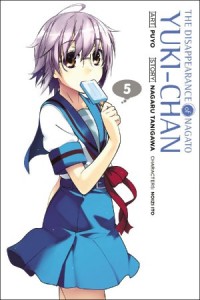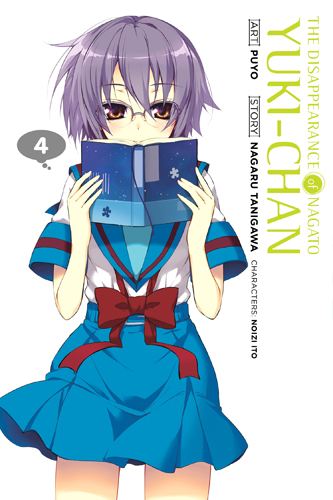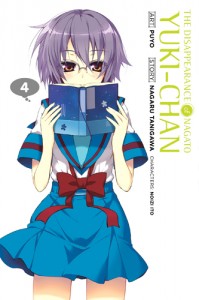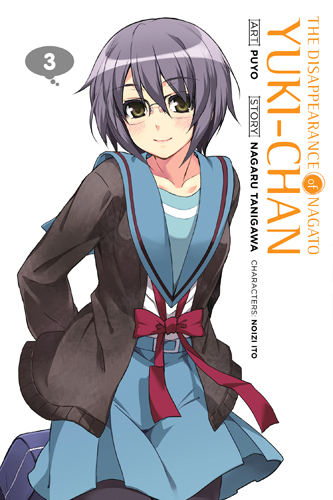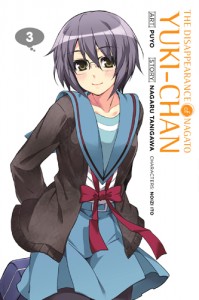By Nagaru Tanigawa and Puyo. Released in Japan as “Nagato Yuki-chan no Shoushitsu” by Kadokawa Shoten, serialization ongoing in the magazine Young Ace. Released in North America by Yen Press.
So when does one choose to end a cash cow? Particularly if the cash cow is a spinoff of an even bigger cash cow whose author seems to have dwindled down to 2 books a decade? Well, the answer is that you don’t – you need to keep the audience interested in these characters for as long as you possibly can, and if the main Suzumiya Haruhi series is on hiatus while its author deals with trying to wrap yup the monster he’s created, and the manga has to end as it can’t make up new Main Storyline stuff – well then, you keep the spinoffs going for as long as they are able.
(For the record, I have generally assumed that when dealing with spinoff titles like these, the main plot is being created by the artist, with the writer only signing off on suggestions and censoring plots he wants to handle himself. Thus I assume that Puyo is in charge of both this and the Haruhi-chan manga, but I could be wrong.)
This volume really reads like the author was intending to wrap it up here. Yuki and her AU counterpart have a talk in her mind, after which she’s back to normal with no memories of what happened before… which is a bit of a pain to Kyon and Ryouko. Luckily it’s summer vacation and Haruhi returns to drag everyone through a series of fun activities. You can see Puyo starting to wrap things up. Haruhi reveals how things changed for her 3 years prior, and shows how she developed in a different, slightly more sedate direction due to Kyon’s unthinking response. There’s a sense she’;s moving on from him here. Likewise, Kyon manages to resolve the awkwardness he feels around Nagato, and we finally get to the big confession…
…except there are fireworks, so she doesn’t hear him. And he immediately pulls back, noting that it’s OK if he said it, and now they can go back to their happy carefree days. We then move on to a slight homework arc, and return to the school for the 2nd half of the year, which features Haruhi trying to figure out how to inveigle herself into the culture festival despite not going to that school, and the return of a very familiar face.
Yes, if you write a spinoff featuring the most popular Haruhi character in a starring role, it makes sense to bring in the big breakout character of the last few years as well. So Sasaki’s back. What will her return mean for the relationship between Yuki and Kyon? Probably not a lot, to be honest. But it will at least keep it dragged out for another couple of volumes, which is all Kadokawa asks, really.
I really do enjoy this title. I wish the art rose above mediocre, but given the popularity of Attack on Titan, mediocre art is not a big setback anymore. Puyo specializes in quiet, introspective emotional moments, and the humor here is gentle and mild – it’s probably to contrast with the Haruhi-chan 4-koma he also writes. But I simply can never get out of my head the fact that this is a cash grab for a large anime franchise, and the addition of Sasaki and pullback from an obvious ending do nothing to assuage my worries in that regard. As always, recommended for Haruhi fans.

